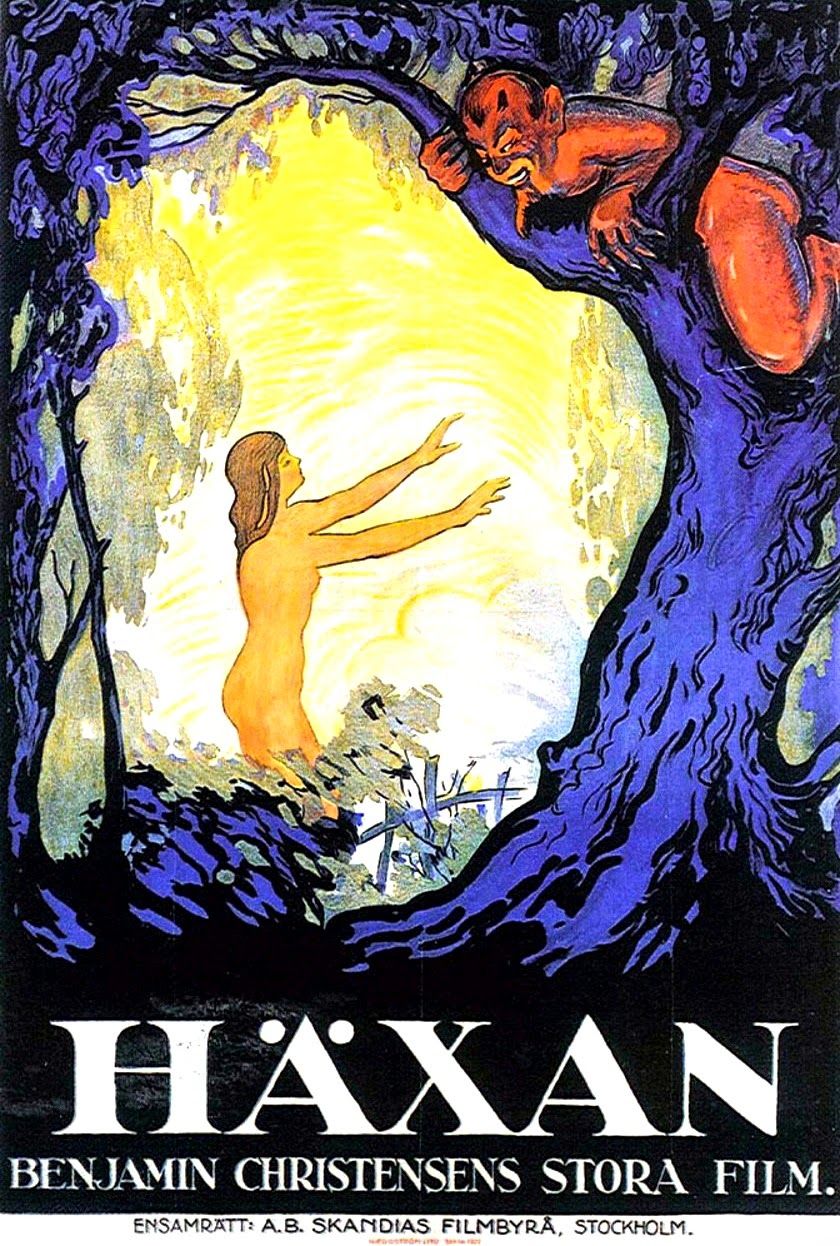Film Review: Häxan (1922)



Häxan (or, Häxan: Witchcraft Through the Ages) isn’t really about witchcraft or devil worship. It’s about the persecution of women at the hands of greedy, lecherous men. It’s about misogyny, control, toxic masculinity, and mental health. It’s a docudrama about how a superstitious belief in magic and demons justified the torture and murder of untold thousands. Häxan was groundbreaking not just politically, but visually as well. The direction of Danish filmmaker Benjamin Christensen is part academic study and part art-house horror—a unique approach that combines to make a very special and disturbing work indeed.

Legend has it that Christensen came across a copy of the Malleus Maleficarum—a book first published in 1487 detailing how to spot, charge, and prosecute witches—and became somewhat obsessed with it. After years of extensive research, and then gaining funding from Swedish studio Svensk Filmindustri, he set his findings to film. The resulting film, Häxan, isn’t exactly a documentary or a traditional narrative. It’s presented as a kind of thesis about witchcraft—its history, misconceptions, and even medical explanations for those accused of it. He uses reenactments of how one might go about getting themselves accused of such treachery, as well as vivid recreations of how, it is said, Satan and his minions tempt and control their victims.

Visually, it’s as stunning as anything released since. The liberal use of film tinting is beautiful in its execution. The creatures (including Christensen himself as Satan) are blasphemous and alluring, with elaborate sets depicting other-worldly delights and horrors to complete the macabre dance. The make-up and visual effects are well ahead of their time, with cinematographer Johan Ankerstjerne using light and shadow to reveal the hellish creatures and their realms. Interestingly, human inquisitors are nearly as ugly. Their deformed and brutish features are made clear with make-up and light, accentuating the malice they hold for the accused. The demons are depicted as grotesque but imaginary while the men of the church—based on fact—are the viler of the bunch.

Stunning visuals aren’t all that Häxan has to offer. It’s also a textbook on how to manipulate and psychologically torture scared and vulnerable women. First, we see how one comes to be accused of witchcraft. Then, how confessions are coerced. The church, it is shown, used a number of nefarious tricks to achieve their ends—from “good cop, bad cop” approaches, to reverse psychology, and of course, torture. Naturally, being poor is a prerequisite to being named a witch, but also, he warns, being too old and ugly, or too young and pretty are justifications as well. Marginalized women who have no means to defend themselves were easy targets for the men in charge. How much has changed?

In a particularly evil scene, a young priest confesses that he has lusted after a young woman. Instead of recognizing his own sin, the woman is charged with witchcraft, imprisoned, and compelled to confess. Her fate is known all too well. Her only crime was to catch the eye of a lustful, weak man. You’ll be hard-pressed to find a male the film—human or beast— that isn’t brimming over with gluttonous sexual innuendo.

In an interesting twist, “modern” psychological explanations for possessions or behavior associated with witchcraft are also given. These explanations, while somewhat dated regarding terminology, stand up surprisingly well (to my understanding anyway). This was, no doubt, enlightening for the time, but becomes even more heartbreaking with the knowledge that these issues continued to go undiagnosed for decades after the film’s release. They may have stopped calling it “witchcraft,” or “demonic possession,” but the truth is that the poor and disabled continued to be mistreated for many, many years.

Many films from bygone eras could be considered campy by today’s standards. This assumption is a mistake most of the time. Häxanpossesses no camp. It is disturbing, compelling, and tells a story that many Europeans—Americans too—needed to hear at the time. Whether they listened or not, who knows, but in 1922, superstition was still a part of everyday life for many. What Christensen was attempting to do, perhaps, was show that these beliefs were all smoke and mirrors. His horrors are enough to give chills to anyone from any era, but imagine seeing these fairy tales on the screen back then. As scary as they are, their recreation may have taken the bite—and therefore, the reality— right out of some of them.
